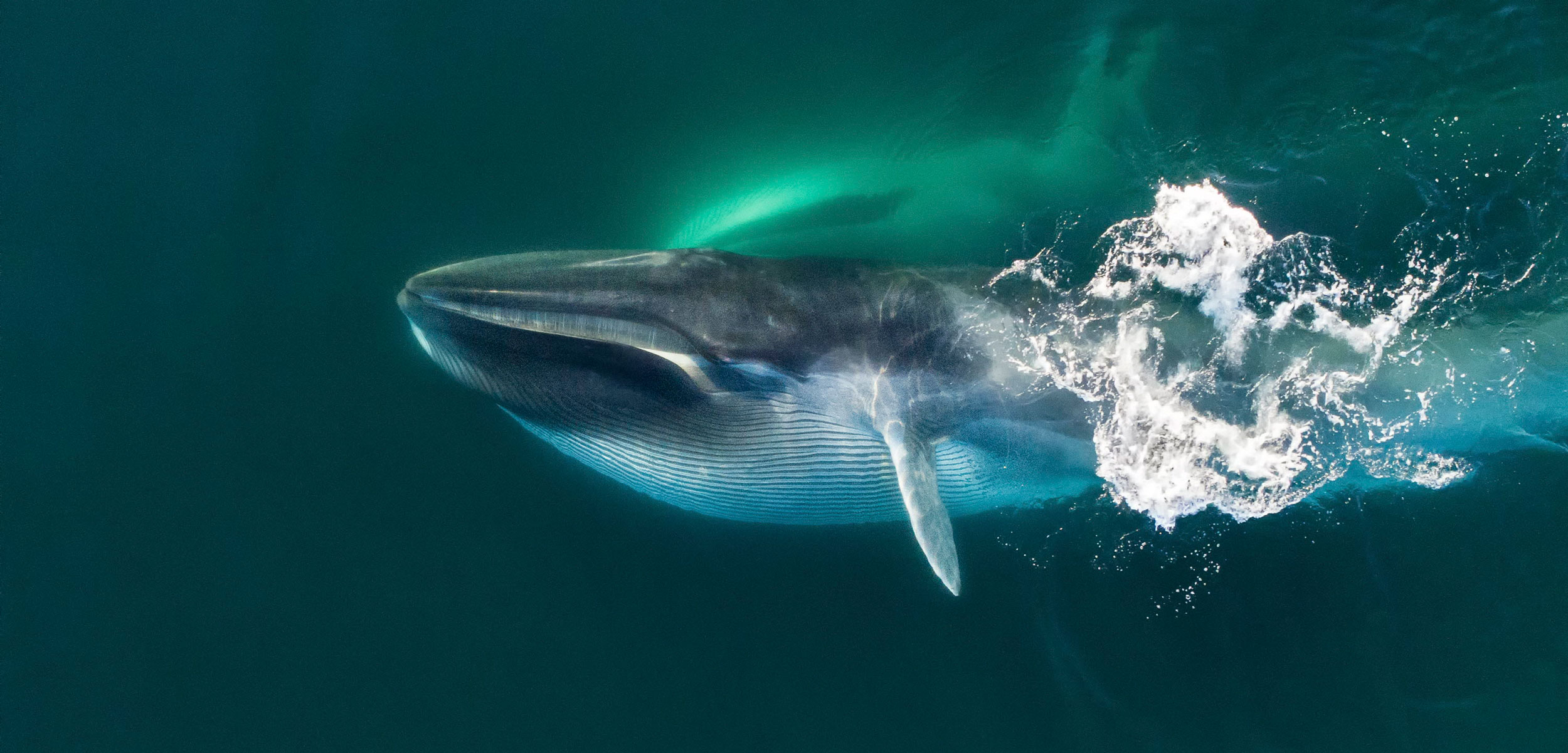Elephant Island: An Oasis for Fin Whales in an Icy Sea
A hydrophone reveals a vital Antarctic feeding and breeding ground for the world’s second-largest whale.
Article body copy
In 2012, Elke Burkhardt was aboard the RV Polarstern in the water between Antarctica and southern Chile. The marine biologist at the Alfred Wegener Institute in Germany was testing an infrared camera, and over the course of a few weeks, she would peer off the ship’s deck and look for whales, sometimes spotting the occasional fin whale. But as the ship moved toward Elephant Island, the krill-stained-orange waters began to seethe. Roughly 100 fin whales were lunging out of the water and blowing plumes of steamy breath. “It was really fantastic,” says Burkhardt.
Seeing even a half-dozen fin whales at a time is remarkable; the species is fast and shy—traits that, at first, spared them from the worst of industrial whaling. But with the invention of the steamship, whalers caught up and soon harvested 95 percent of the global fin whale population, killing an estimated 750,000. The population has since recovered to around 100,000. This means that, to the scale of their abundance, seeing 100 fin whales churning the water in the same place is like finding a remote village in the jungle with the population of Hong Kong.
The krill populations off Antarctica are the richest in the world, and whales from distant regions congregate there to feed on the bounty. Burkhardt wondered if that’s what she was seeing.
While fin whales can be difficult to spot, they’re easy to hear thanks to their deep, booming calls. To glean insight into what had drawn so many fin whales to one place, Burkhardt and her team set up an underwater microphone in January of 2013 and left it to record for three years.
Whales vocalize during many activities, including when they feed. But the calls Burkhardt was hearing sounded like mating calls. Crucially, the whales were vocalizing the most in May, during breeding season, with the sounds layered so thickly they blended into a chorus. Elephant Island isn’t just the site of a buffet, Burkhardt and her colleagues discovered, but a busy breeding ground.
Many cetaceans, including dolphins and whales, vocalize with regional accents—distinctions that form when subpopulations splinter off. These accents can be used by both human researchers and whales to help tell groups apart. To what degree fin whales have distinctive accents for different subpopulations is not well understood. But digging deeper into the chorus, the scientists found something else intriguing.
While previous research has shown that other fin whales around Antarctica belt out their songs at around 100 hertz, and fin whales in the northern hemisphere sing higher, at around 130 hertz, the Elephant Island whales are more baritone, at around 80 to 90 hertz. Intriguingly, this frequency just so happens to be the same as that of the fin whales that scientists have previously seen calving to the northwest, off Chile’s Pacific coast. If these accents mean that the groups of whales are different subpopulations, as scientists suspect, this discovery shows that the whales that come to Elephant Island to breed and calve near Chile may be a different subpopulation than the other fin whales off Antarctica.
If they are, it also changes the game for conservation. Mixed populations can be managed together, but distinct subpopulations require individual management.
As long as we leave them alone, fin whales seem to thrive, explains Eric Archer, a geneticist with the National Oceanic and Atmospheric Administration. The species’ large pre-whaling population has left them with a great deal of genetic diversity with which to bounce back, he says. “In the North Pacific,” Archer says, “they have likely been recovering quite well.” Regions equivalent to the newly discovered breeding grounds are likely to have been important for that, he adds.
There’s reason to believe Elephant Island has already contributed to the fin whale’s rebounding population. Research conducted by other scientists in the region a decade ago found fin whales singing in the 80-hertz range, but the energy of that signal was 10 times weaker than what was found in Burkhardt’s study. “So just from the energy difference from 10 years, you can assume it’s more whales,” says Burkhardt.
The discovery of these whales’ probable breeding and calving grounds is important as it makes them key targets for conservation efforts. Protecting these sites will protect a great number of whales.
But even a place as remote as Elephant Island is not beyond human reach. The area offshore is heavily fished for krill, and Antarctica is a destination for cruise ships. The notoriously shy fin whales are especially vulnerable to ecological disruption, so human activity in the area could ruin a feeding and breeding ground many whales have apparently come to rely on.

